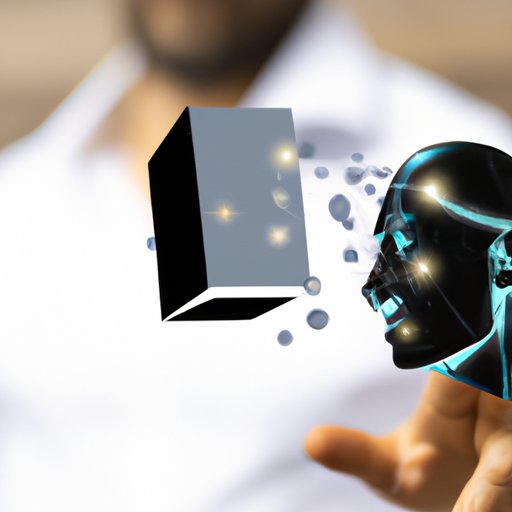Introduction
Artificial narrow intelligence (ANI) is a form of artificial intelligence (AI) that focuses on performing specific tasks with high accuracy and efficiency. Unlike general AI, which is designed to tackle complex problems and learn from experience, ANI is designed to carry out specific tasks within a narrow range. This makes it useful for automating repetitive tasks, such as data entry or image recognition, which can be done more quickly and accurately than humans.
In this article, we will explore the benefits and challenges of ANI, how it works, and its role in everyday life. We will also discuss the potential for ANI to revolutionize industries and the risks associated with its use.
A Beginner’s Guide to Artificial Narrow Intelligence
To understand ANI, it is important to first understand how it works. ANI is based on algorithms, which are sets of instructions that tell a computer what to do. These algorithms are designed to recognize patterns in data and then make decisions based on those patterns. For example, an ANI algorithm might be used to identify objects in an image or to predict stock prices.
There are several different types of ANI, each with their own strengths and weaknesses. For example, machine learning is a type of ANI that uses algorithms to learn from data and improve over time. This type of ANI is often used for image and voice recognition, as well as natural language processing. Robotics is another type of ANI that is used for automated manufacturing and physical labor.

Exploring the Benefits and Challenges of ANI
ANI offers many advantages over human labor, including speed, accuracy, and cost-effectiveness. According to a study by McKinsey, AI could reduce labor costs by up to 30% by 2030. ANI also has the potential to reduce errors and increase efficiency, as algorithms can be designed to work faster and more accurately than humans.
However, there are also some challenges associated with ANI. One of the biggest concerns is the potential for bias in algorithms, as they may be programmed to favor certain outcomes over others. In addition, ANI algorithms may not be able to adapt to changing circumstances, which could lead to inaccurate results.
The Role of Artificial Narrow Intelligence in Everyday Life
ANI is already being used in many aspects of everyday life, from healthcare to transportation. For example, ANI algorithms are used to diagnose diseases and recommend treatments, while robots are used to automate manufacturing processes. ANI is also used in self-driving cars, facial recognition systems, and online chatbots.
The impact of ANI on human lives is far-reaching. It has the potential to increase productivity and efficiency, as well as reduce costs. However, it also brings some risks, such as the potential for job losses due to automation and the possibility of algorithmic bias.

How Artificial Narrow Intelligence is Changing the World
ANI is already having a major impact on businesses and industries around the world. For example, ANI algorithms are being used to analyze customer data and optimize marketing campaigns. They are also being used to automate financial processes, such as fraud detection and risk management. In addition, ANI is being used in education to personalize learning experiences and improve student outcomes.
The use of ANI in industry is likely to continue to grow, as businesses look for ways to increase efficiency and reduce costs. However, it is important to consider the potential risks associated with ANI, such as the potential for job losses and algorithmic bias.

The Pros and Cons of Artificial Narrow Intelligence
Like any technology, ANI has both benefits and risks. On the one hand, it has the potential to revolutionize industries, increase efficiency, and reduce costs. On the other hand, it raises concerns about privacy, security, and algorithmic bias.
It is important to consider both the benefits and risks of ANI when deciding whether or not to use it. While it has the potential to revolutionize industries, it is important to ensure that it is used responsibly and ethically.
What is the Future of Artificial Narrow Intelligence?
The future of ANI is uncertain, but it is clear that it has the potential to revolutionize many industries. As AI technology continues to improve, ANI algorithms will become increasingly sophisticated and capable of tackling more complex tasks. This could lead to increased automation and the potential for job losses in certain sectors.
At the same time, ANI has the potential to create new job opportunities in areas such as AI research and development. It could also lead to improved services and products, as well as new ways of interacting with technology.
Ultimately, the future of ANI will depend on how it is managed and regulated. It is essential that companies, governments, and individuals work together to ensure that ANI is used responsibly and ethically.
Conclusion
In conclusion, artificial narrow intelligence is a powerful technology with the potential to revolutionize many industries. While it offers many advantages, such as increased efficiency and reduced costs, there are also some risks associated with its use. It is important to consider both the benefits and risks of ANI before deciding whether or not to use it.
(Note: Is this article not meeting your expectations? Do you have knowledge or insights to share? Unlock new opportunities and expand your reach by joining our authors team. Click Registration to join us and share your expertise with our readers.)
